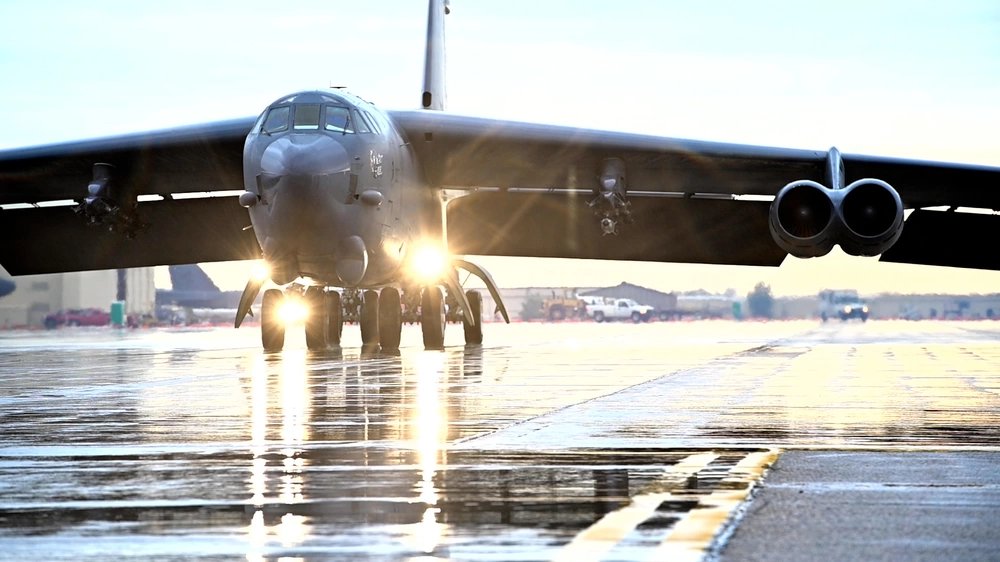Getting older can be hard for anyone and the B-52 Stratofortress is no exception. We all start moving slower, taking a little more time to get going. As the B-52 looks forward to its 70th year in service with the United States Air Force, it too has some trouble getting a move on.
Luckily for the Air Force and for America’s strategic defense, the B-52 has an explosive way of getting up and at ‘em much quicker than usual, something it can do whenever the need arises. It’s called a “cart start” and it helps the bomber achieve liftoff in about 10 minutes.
Normally, the B-52 takes about an hour to get its eight turbofan engines up and running (including all prep and safety checklists) but airmen can also use the “Cart Start” if the United States has to, say, retaliate in the face of a nuclear first strike – which was the B-52’s primary mission during the Cold War days of the Strategic Air Command.

“Cart” is short for “Cartridge,” small, controlled explosive devices placed into two of its eight engines. The hour window is reduced to ten minutes, which will give the B-52 enough time to get off the ground and away from the base before it’s totally destroyed by any potential incoming nuclear-tipped ICBMs.
It may seem like an antiquated practice, since the risk of a surprise Russian (or Chinese or North Korean) nuclear first strike using intercontinental ballistic missiles is now much lower than it was 40 years ago. The cart start is still a viable practice, one that can be used today in the case of any reason that might require a faster than normal takeoff run.
A YouTube video released by the Air Force in 2019 demonstrates the 96th Bomb Squadron performing a cart start on a B-52H bomber out of Barksdale Air Force Base, Louisiana.

“The charges basically jumpstart the engines, removing the need to bring out the aerospace ground equipment used on normal launches,” said Tech. Sgt. Andrew Poole, 36th EAMXS crew chief. “By removing these steps we increase the aircrafts startup time from more than an hour to less than 10 minutes.”
The B-52, or “BUFF” as they’re lovingly called for short (you’ll have to Google that term), has been a mainstay of America’s bomber force since its first flight in 1952. The fleet has undergone a number of upgrades and refits over the years, intended to extend its service life to 2050 (and maybe beyond).
Although a subsonic bomber, its longevity is due mainly to its low operating cost and relatively high speed. It has the ability to deploy nuclear weapons, but has only ever dropped conventional weapons in combat.

Aside from engine upgrades, the bomber has also received upgrades to its bomb bays that allow it to deploy Joint Direct Attack Munitions (JDAM) to support troops on the ground, information sharing networks that allow for voice and data transfers to command and control centers, increased fuel efficiency by reducing drag, and the Air Force is also working to upgrade its defenses. It hopes to refit the B-52 with lasers and air-to-surface and air-to-air missiles.
So while many of us are struggling to get up out of bed at age 70 without groaning or creaking, the B-52 will be able to jump up and get to the fight faster and more efficiently. All we need now is a human version of a cart start.


